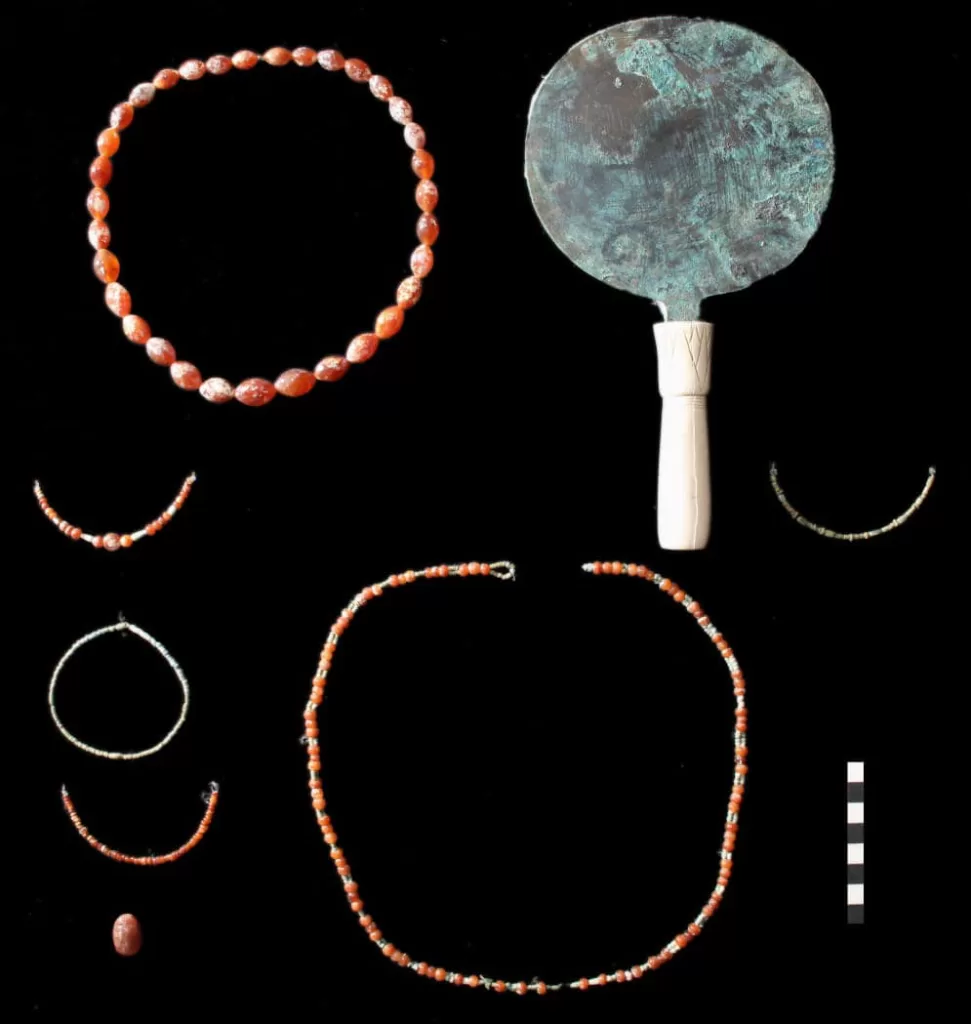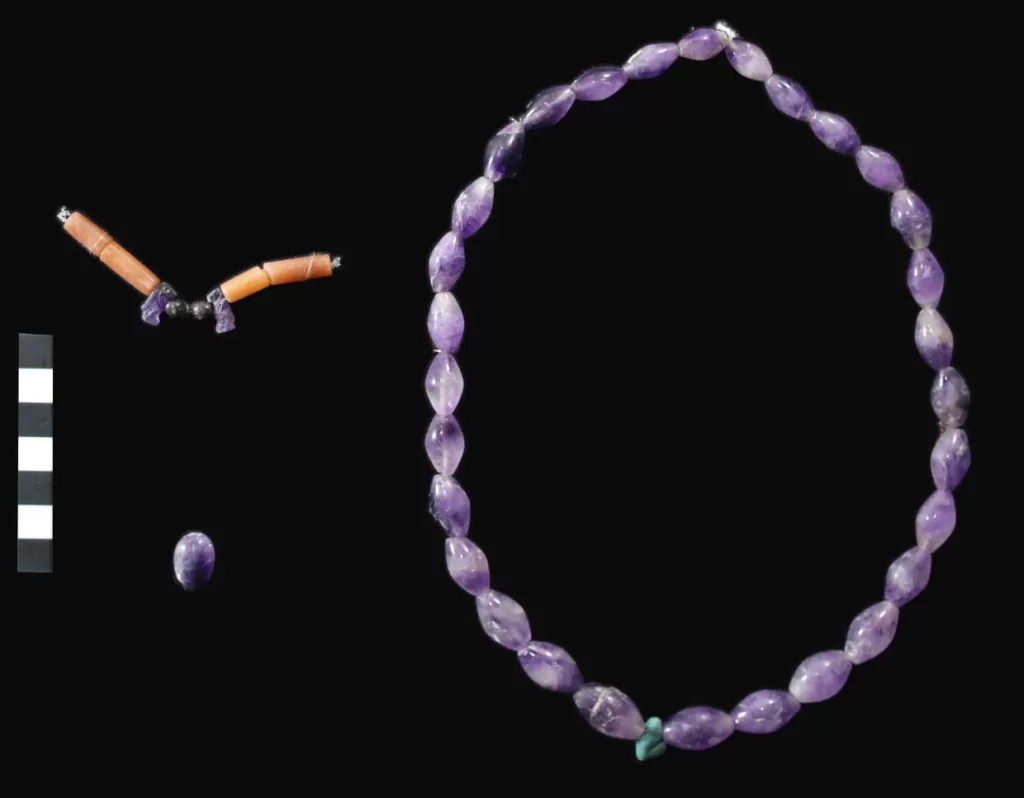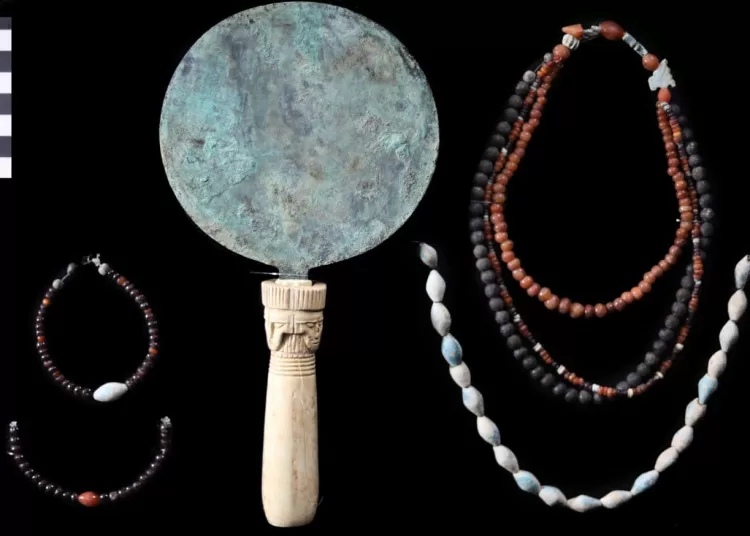In a ground-breaking announcement, the Ministry of Tourism and Antiquities has recently unveiled the discovery of the first cemetery dating back to the Middle Kingdom in the Asasif cemetery, on the west bank of the Nile in Luxor, southern Egypt.
This revelation adds an unprecedented new history to the renowned archaeological site, already celebrated for its collection of tombs from the Late Period, particularly the 25th and 26th Dynasties (circa 747–525 BC).
The Asasif site is part of the larger Theban Necropolis, a testament to the grandeur and complexity of ancient Egyptian civilisation.
Known for its tombs from the 25th Dynasty, also referred to as the Nubian or Kushite Dynasty, the site reflects a fascinating fusion of Egyptian and Nubian styles.
The rulers during this time hailed from Kush, in present-day Sudan, and their tombs often feature grand entrances, courtyards, pillared halls, and ornate burial chambers.
The architecture of these tombs is a testament to both continuity and innovation, bridging traditional Egyptian designs with influences from the Nubian rulers.
The rich decorative art adorning the walls, with vivid scenes from daily life, religious rituals, and afterlife beliefs, offers a glimpse into the spirituality and artistry of the time.
The recent discovery was made by a joint Egyptian-American archaeological mission working on the restoration project of the cemetery south of Asasif.
During the archaeological cleaning works in the southern part of the roof of the Tomb of Karabasken, a mayor of Thebes and fourth priest of Amun, the mission found a cemetery that includes a group of closed burials, which had not been opened before, in addition to unique archaeological finds.


The Supreme Council of Antiquities Secretary General Mohamed Ismail Khaled highlighted the significance of the discovery, saying, “It changes the history of the Asasif necropolis and makes it part of the great necropolis of the Middle Kingdom in Thebes.”
He noted that “the discovery will contribute to understanding the practices and rituals of burial in a good cemetery during the Middle Kingdom.”
The Middle Kingdom, lasting from approximately 2040 to 1782 BC, is one of the periods of prosperity in ancient Egypt.
It stretched from the reunification of Egypt under the reign of Mentuhotep II in the Eleventh Dynasty to the end of the Twelfth Dynasty.
The mission discovered 11 burials containing skeletons of men, women, and children, indicating that it was a family cemetery used for several generations during the 12th dynasty and the beginning of the 13th dynasty.
Among the most prominent archaeological finds in the cemetery is a unique pendant consisting of 30 cylindrical beads of amethyst stone with two cylindrical beads of agate surrounding a hippo-head-shaped amulet.
The mission also unearthed a collection of jewellery, including necklaces, bracelets, chains, rings, and belts made of red agate, porcelain inlaid in blue and green, and painted vine stone. These pieces are decorated with amulets in the form of hippopotamuses, falcons, snake heads, and other motifs, all remarkably well-preserved.

In addition, copper mirrors were found inside two of the burials, one with a lotus-shaped handle and another with a rare design depicting the face of the goddess Hathor with four faces, showing her as a woman with strict features.
The mission also discovered a number of copper alloys, a small statue of fertility crafted from fine blue and green stone with cut legs, and nearly 4,000 clay beads that composed the original hair of the statue.
A square-shaped table with a low edge and a water canal in the middle, surrounded by prominent inscriptions of a bull’s head, a loaf of bread, and other offerings, was also found. These artefacts offer invaluable insights into the burial customs, religious beliefs, and artistic styles of the Middle Kingdom.

Modern archaeological efforts in the Asasif area have been focused on excavation, documentation, and conservation of the tombs. These efforts have unearthed new findings, helping historians and archaeologists better understand the complexities of the era.
In 2019, a significant discovery in the Asasif area gained worldwide attention when archaeologists uncovered a remarkable cache of 30 ancient wooden coffins in a tomb on Luxor’s west bank.
The find, led by Egyptologist Mostafa Waziry, was celebrated as one of the year’s most significant archaeological discoveries.
The coffins, dating back to the 22nd Dynasty of the late New Kingdom (circa 945–712 BC), were remarkably well-preserved, with vibrant paintings and inscriptions still intact. Found in two rows, stacked on top of each other, the coffins contained the mummified remains of men, women, and children, indicating the collective family or communal burial practices of the time.
This discovery was notable, not only for the number of coffins, but also because they were found in their original state, untouched by grave robbers.
It is one of the largest and most well-preserved finds of its kind in the Theban Necropolis for many decades.






Discussion about this post